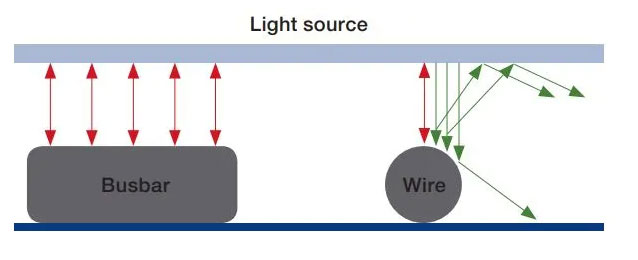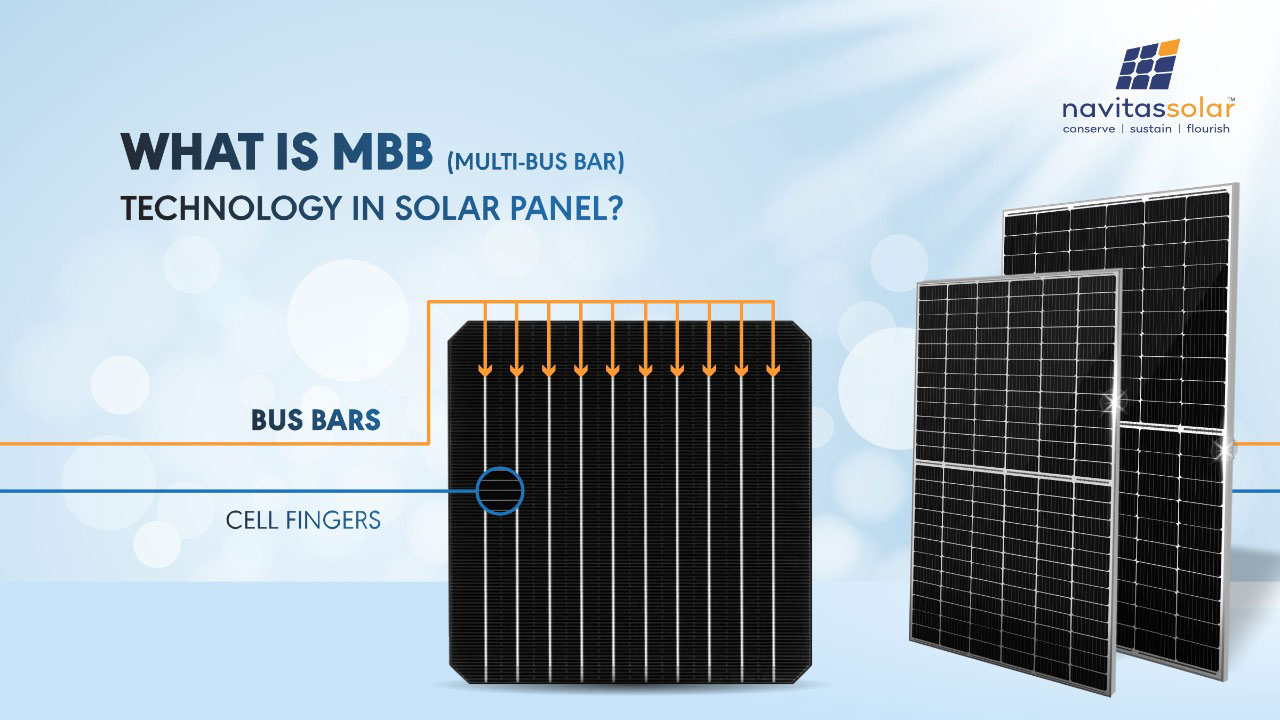Let’s go deeper into MBB (Multi-bus bar) technology in solar panel
At Navitas, India’s one of the leading solar module manufacturer, we always strive to share knowledge and help people informed decisions when they decide to opt for a solar system. Solar energy is a rapidly evolving technology and it has tech words or jargon associated with it. If you go a bit dipper in this technology, it can help you reap better results.
For example, the growing demand for PV modules has opened the doors for researchers in the field. Continuous research is taking place to produce high-efficiency modules at a lower cost. MBB (Multi-bus bar) technology is one of the research, which enhances solar modules’ performance.
Now, let us understand MBB technology and its advantages but before that, some basic terms are required to be understood.
What is a bus bar?
There is a thin strip, which is printed on the front and back of the solar cell. That strip is used to conduct electricity, which is called the bus bar. There are metallic and super thin grid lines perpendicular to the bus bars, which are called grid fingers/cell fingers. The fingers are connected perpendicularly with the bus bars. The bus bars and the grid fingers are printed on a cell by the screen-printing method. Generally, the bus bars of a solar cell are made of silver because of their high conductance. Silver plating is done on the front side of the solar cell to improve current conductivity and on the rear side to reduce oxidization. The fingers collect the DC generated and deliver it to bus bars. The bus bar separates the cells to conduct DC from photons and transfers to a solar inverter to convert it into AC.
The benefit of multi-bus bar (MBB) technology?
- Weather resilience
Multi-bus bar cells are one of the well-known trends in the design of the solar panel. The multi-bus bar cells divide the solar cell into smaller parts and they are more resistant to overload and weather conditions. It also avoids micro-cracks between the bus bars on the cells. MBB have long-term durability and reliability under crack conditions compared to ordinary cells.
- Ohmic Losses
The higher number of bus bars reduces the spacing between the bus bars which results in a shorter path of flowing current in both the fingers and the bus bars and that in turn reduces series resistance losses. The power loss (which is measured as I2R) implies that when the current is reduced by half, the power losses will be reduced by a factor of four.
- Shading losses
When MBB is utilized in half-cut modules, it furthermore helps in reducing shading losses, which significantly increases the efficiency of the module in poor operating conditions.
- Physical appearance & optical performance
5 BB Modules use rectangular plates while MBB modules use circular ribbons which reduce the shading area and repetitively reflect the incident light as shown in the Figure which increases the optical performance and thereby the power generation. However, MBB and the more bus bars approach are different in the cross-section and function. Bus bars are usually printed flat and they require soldered flat ribbons to carry current from the cell resulting in more resistive losses. While MBB are thin and round copper wires, they do not require ribbons across the solar cell, instead they carry current from the fingers to interconnecting ribbons outside the front surface of the cell.

- Technical performance
MBB means a solar cell is equipped with 9 to 16 bus bars instead of 4, 5 or 6. With MBB, 2-2.5 % higher power output can be achieved. The MBB insists both the fingers and the bus bars be smaller. Therefore, reducing the volume of silver. As silver is one of the most expensive materials in solar cell manufacturing, MBB will reduce silver usage up to 50-80% which is a significant cost saving in module production.
Therefore, the MBB enhances the current transmission path along with reducing the risk of cell crack. MBB round strip helps to improve sunlight utilization. In addition, it helps to enhance anti-micro-crack performance and lower the risk of hot spot generation. The half-cell configuration of the modules offers advantages of high power output, better temperature performance and reduced shading effect on the power generation. Thus, MBB is the trending technology that is used in solar cells.


Related Posts
You May Also Like
The Future of Energy is…
Read MoreNavitas Solar Powers Up for…
Read MoreRCB Goes Green: How Navitas…
Read MoreThe Green Revolution in Cricket:…
Read MoreBats, Balls, and Solar Panels:…
Read MoreTop 5 Benefits of choosing…
Read More